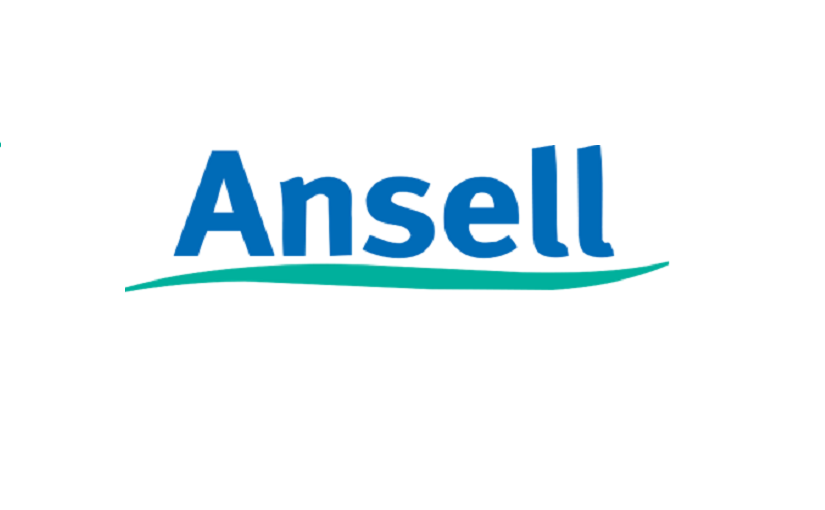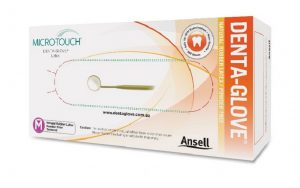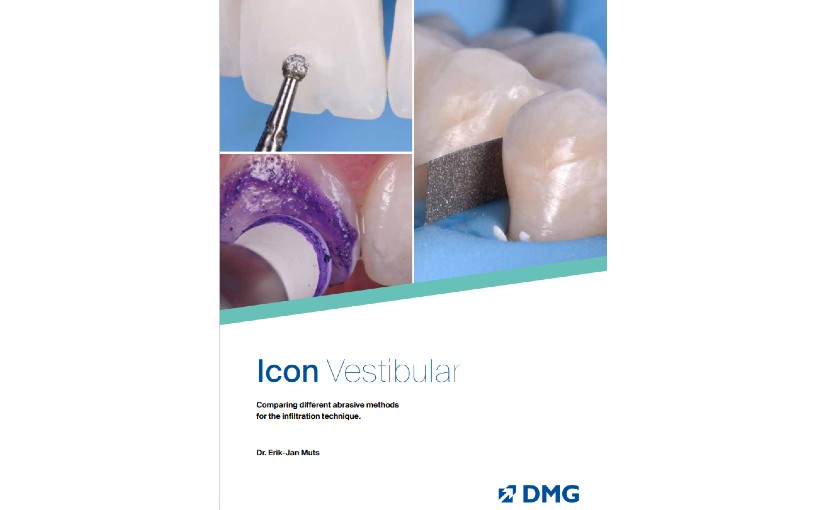
MICRO-TOUCH Denta-Glove NRL
Glove Standard specifications address characteristics or factors such as:
- Performance and efficacy.
- Biocompatibility with blood, saline and any intended chemical contact.
- Powder levels.
- Allergenicity (chemicals and proteins).
- Pinhole and Acceptable Quality Level (AQL).
- Barrier integrity (tensile strength and elongation).
- Length, cuff, size, color, odor, and thickness.
- Human factor, fatigue and donning.
- Packaging and Labelling; if applicable special labelling claims such as chemotherapy.
- Shipping Stability and Shelf Life
How to select quality gloves:
Powder-Free
Gloves with trace amounts of residual former-release powder (2 mg or less per glove) and no intentionally added donning powders are commonly referred to as “powder free.”
Protein Level Claims
Manufacturers who can reliably reduce the levels of latex proteins in their gloves to a known level may make a labelling claim. At present, U.S. Food and Drug Administration (FDA) does not allow a protein labelling statement or claim below the current 50μg/dm2 sensitivity limit of the ASTM Lowry Test Method (D5712).
Chemical Sensitization Claims
Certain chemicals used in the manufacture of medical gloves, can cause skin sensitization and irritation. If manufacturers sufficiently reduce or eliminate the presence of these chemicals, they may make appropriate labelling claims regarding the reduced potential of chemical sensitization.
Biocompatibility
Biocompatibility is the quality of being compatible with living tissue by not being toxic or injurious and not causing immunological reactions. In a regulatory sense, biocompatibility is testing to determine the potential toxicity resulting from bodily contact with a medical device. Because medical gloves are in direct contact with skin, a primary skin irritation study and a dermal sensitization study are appropriate. Further, should a glove contain a color, flavor and /or scent additives it should be submitted for biocompatibility testing to demonstrate the safety of the additives.
Barrier Integrity – Tensile Strength and Elongation
Specific standard tests that gloves must meet during manufacture and simulated conditions similar to real-time working conditions are included in the Standards to ensure that gloves are capable of withstanding specific force and stresses including stretching. This ensures that gloves are able to withstand certain pressures beyond those that would be required when worn under typical working conditions and durations.
AQL – Freedom from Holes
Manufacturers must subject a specific proportion of gloves they manufacture to testing for water tightness according to a specific testing protocol. Water tightness testing is one way that the quality of gloves in terms of freedom from holes can be assessed. Passing this test is one way of proving that gloves provide an adequate barrier against bi-directional transfer of microbes between patients or contaminated surfaces and glove wearers. The next section reviews Acceptable Quality Level specifications in further detail according to various International Standards.
What is an acceptable quality level (AQL)?
AQL is an industry standard. It is a statistical sampling process for evaluating quality. According to the International Standards Organization (ISO) (2859-1: 1999)a, AQL is “the worst tolerable process average when a continuing series of lots is submitted for acceptance sampling”. Process average is the typical percentage of defective gloves in the lots/batches sampled. A General Inspection Level is allocated to designate the relative amount of gloves inspected.
What standards apply for AQL?
Various International Standards, determine the AQL that manufacturers must comply to. However, manufacturers can set their own standards as long as they are stricter than the international standards. The lower the AQL, the lower the chance of finding a defect in the batch of gloves and the higher the quality of the product.
How is the acceptable quality level determined?
Glove AQL is determined by manufactured lot size, the sampling plan inspection level set by the corresponding international standards, which is the number of gloves randomly selected to be tested and the AQL level also set by the Standards. This calculates the allowable number of nonconformities/imperfections for every glove lot produced. The standards stipulate the minimum AQLs for lot-by-lot inspection against specific criteria such as physical dimensions (width, length and thickness), water tightness, tensile strength and elongation at break (before and after accelerated ageing). The standards also prescribe standardized testing. AQLs commonly required in glove manufacture include air and water tests to indicate any defective glove areas.
At their discretion, manufacturers may routinely choose to produce a glove or range of gloves that exceed the minimum international and national standards. Exceeding these standards gives a higher degree of assurance that the risk of defective gloves in a sampling plan is closer to zero.
MICRO-TOUCH® DENTA-GLOVE® NRL
Latex, powder-free, examination glove with maximum comfort for a wide range of dental procedures.
This non-sterile glove is an ideal choice for dental specialists who switch gloves frequently and experience hand fatigue from continuous use.
- Latex formulation and optimised film thickness offer a high level of elasticity, flexibility and sensitivity
- Inner chlorinated surface to ensure fast and easy donning
- Tested safe for oral examination, ensuring that the glove is safe for patient contact



